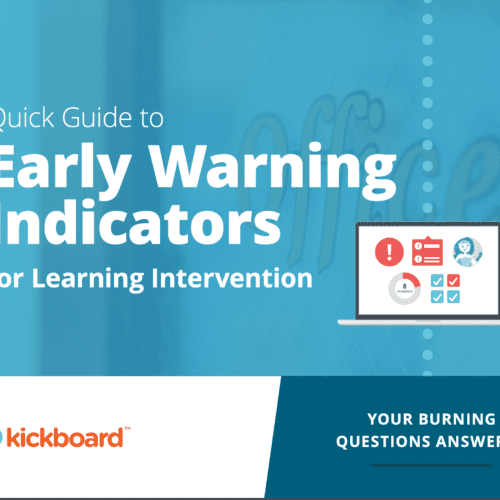
1. Determine the Goal
The first step in writing a white paper involves understanding the organization requiring the white paper and what the document’s purpose will be. That includes identifying the organization’s needs in terms of its audience(s) and determining the goal of the white paper. Goals are usually the first thing I ask about when I first get a white paper assignment because the client’s answer influences all subsequent steps. Below are some of the most common goals:
- Lead generation
- Providing support for sales teams in the intermediate and later stages of the sales cycle
- Making readers aware of a new and/or best practice or a product offering
- Providing information or tips for positioning the organization as an expert or desirable resource
- Elaborating on the unique selling proposition (USP) of an organization, product or service
2. Identify Your Targeted Readers
Your second step is figuring what type of person your white paper should target in order to achieve your objective. All organizations have a wide range of audiences or stakeholders. Trying to address all possible audiences in one white paper make the writing so unfocused, it won’t have any real impact on anyone. You don’t have to target just one job title or group, you just can’t tackle anyone. To narrow things down, consider what influence your prospective target group(s) will have in bringing about the outcome you desire. For example, do you need to address C-level executives directly in order to achieve your objective or would someone lower on the business hierarchy (e.g., an IT director, business manager, etc.) be more appropriate?
3. Determine the Topic
This step may seem obvious, but many people neglect it and end up vaguely rambling from one topic to the next. Since you now know your objective and your audience, you need a topic that accommodates both. Sometimes finding the right topic is straightforward, e.g., describing a new trend/approach/technology or explaining the advantages of your particular approach/system, etc. The most important thing to remember is that white papers are usually a“soft sell.” In fact, many do not overtly mention the organization’s product or service at all. Pick a topic and angle that will allow you to present useful objective information rather than pushing a lengthy brochure on prospective readers.
4. Do Research
Since a white paper provides an in-depth exploration of a topic, it should showcase the expertise of the organization backed by research. It can include your own findings if you have the know-how (or hire someone with the know-how) to perform solid research (e.g. a survey or study). More often it’s third-party evidence that substantiates your claims. For reference citations, white papers typically use either footnotes or an APA-type style.
5. Conduct Interviews
You will likely need key members of the organization or even associated outsiders to share their expertise and specialized knowledge. It’s a good idea to conduct interviews after you’ve got at least some of your research done, so you know the specific gaps in your knowledge that you need to address rather than wasting time asking lightweight questions.
6. Prepare an Outline
This is an essential step. It’s much easier to adjust course at this stage if necessary. Anyone who will be reviewing or approving the final version can easily add input at this point, e.g. provide their perspective on the points in your outline or add points that they think should be covered. That will be much less painful and time consuming than if they provided this type of input to a complete draft.
7. Write the First Draft
Since you’re competing for readers’ time, you need to grab attention beginning with the executive summary. So, jump right into creating dramatic tension by directly addressing readers’ problems, concerns, or frustrations. Next, promise a solution in the summary but don’t include the actual solution – you want them to keep reading. Always keep in mind that the white paper is a report rather than a marketing brochure, so focus on providing useful, objective information. That means that any mention of the organization’s product or service should be in a relatively brief section near the end of the paper (it can also be mentioned in a sentence or two within the executive summary. Include these main sections:
- Executive Summary and/or introduction
- The issue facing readers and the contributing factors
- Solution(s) and benefits
- Summary/conclusion
Otherwise, you have the freedom to format the paper in any way that best suits your goals and the topic. This white paper includes case studies in the solution section while this one divides the issue section into a series of questions. Experts recommend around 3,000 words for the average white paper, but they also say that if your targeted readers will expect a great amount of detail, feel free to write a longer paper. Finally, remember to add your call to action at the end of the paper (before your general organization blurb and contact information).
8. Include Images and Pull-Quotes
Use illustrations such as charts and tables to clarify complex concepts. Ensure that your charts, tables, screenshots, etc. have no extraneous visual“clutter” to distract readers from your intended message. Similar images should have a consistent size and format and include a caption with the image number and title. Pull-quotes (excerpts of the copy in displayed in a larger font and in a dominant position) grab attention and increase reader interest.
9. Editing and Approvals
White papers typically go through more than one round of editing and approvals. Some people opt to hire professional editors, but the task can be done in-house. In the latter case, make time to lay the copy aside for a few hours or days so that you can look at it with a fresh perspective.
10. Market the White Paper
Once you’ve created the paper, you need to make your targeted readers aware of it. It’s obviously a good idea to place it on your website, but you’ll still have to draw their attention to it. Some companies write a press release announcing a new white paper. If you’re on social media, you should definitely announce it; LinkedIn groups especially are a great place to talk about and offer your white papers and reports. However, avoid a promotional tone; approach it from the angle of sharing useful information. If in doubt, look at how others in the group have introduced similar documents. On the other hand, you may have designed the white paper for your sales team to use a leave-behind or to distribute at trade shows. This VentureHarbour blog post and this Webbiquity blog post will give you more tips for marketing your white paper and marketing with white papers.
Are there any other steps you’ve included in your white paper writing process that you don’t see here? If so, share them in the comments section.







